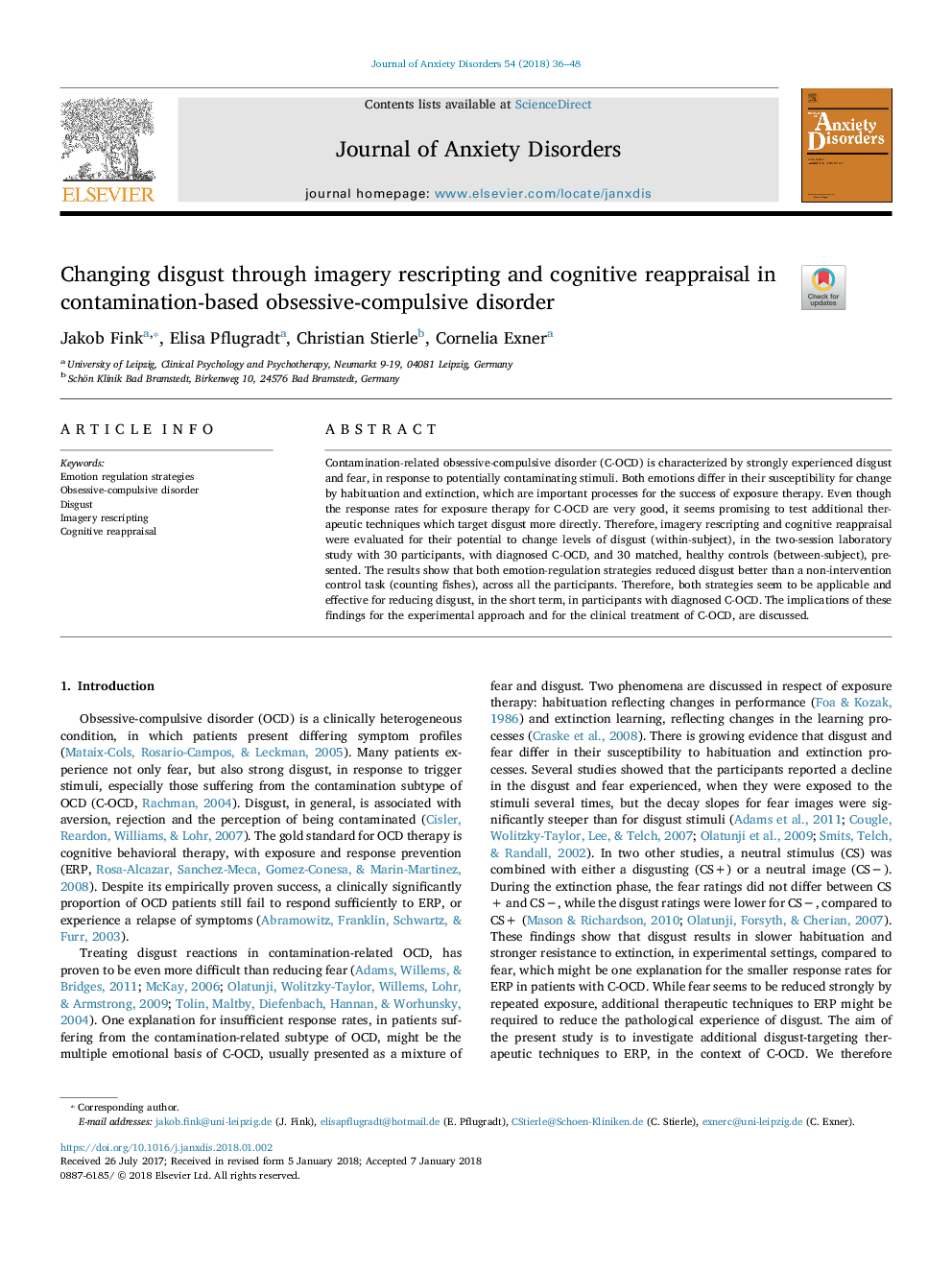ترجمه فارسی عنوان مقاله
تغییر انزجار از طریق بازنویسی تصاویر و بازنگری شناختی در اختلال وسواس فکری مبتنی بر آلودگی
عنوان انگلیسی
Changing disgust through imagery rescripting and cognitive reappraisal in contamination-based obsessive-compulsive disorder
| کد مقاله | سال انتشار | تعداد صفحات مقاله انگلیسی |
|---|---|---|
| 114840 | 2018 | 13 صفحه PDF |
منبع

Publisher : Elsevier - Science Direct (الزویر - ساینس دایرکت)
Journal : Journal of Anxiety Disorders, Volume 54, March 2018, Pages 36-48
ترجمه کلمات کلیدی
استراتژی تنظیم احساسات، اختلال وسواسی-اجباری، نفرت، بازنویسی تصویر، ارزیابی شناختی،
کلمات کلیدی انگلیسی
Emotion regulation strategies; Obsessive-compulsive disorder; Disgust; Imagery rescripting; Cognitive reappraisal;

